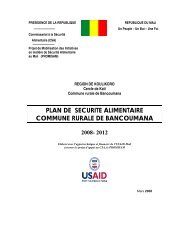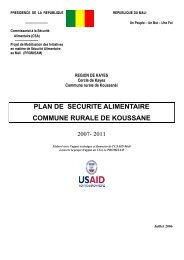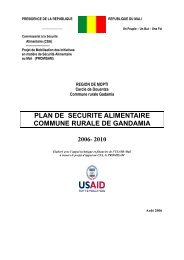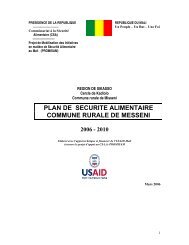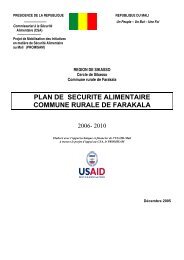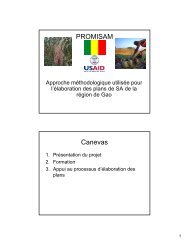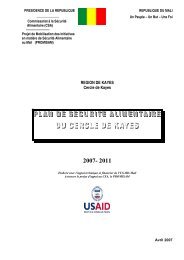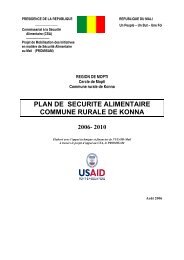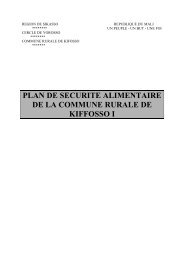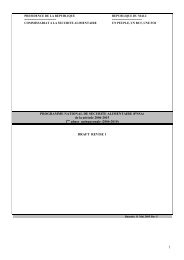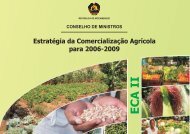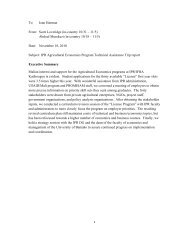STATA 11 for Windows SAMPLE SESSION - Food Security Group ...
STATA 11 for Windows SAMPLE SESSION - Food Security Group ...
STATA 11 for Windows SAMPLE SESSION - Food Security Group ...
You also want an ePaper? Increase the reach of your titles
YUMPU automatically turns print PDFs into web optimized ePapers that Google loves.
Stata <strong>11</strong> Sample Session Section 2 – Restructuring Data Files – Table Lookup & Aggregation<br />
prod unit conver<br />
(Product) (unit) (conversion factor)<br />
... ... ...<br />
7 8 19<br />
7 24 53<br />
... ... ...<br />
30 8 17<br />
30 24 47<br />
... ... ...<br />
• calories.dta: This also is a table-lookup file, created<br />
<strong>for</strong> convert kilograms of food into calories of food. It<br />
contains two variables:<br />
a. prod - the product (crop)<br />
b. calories - number of calories per kilogram of<br />
each of the crops<br />
To create a data files that will produce the output table<br />
described above, we need to combine the data from different<br />
files. There are different methods that can be used to combine<br />
files, depending on what is desired. In Stata, we can<br />
1. Append datasets. Appending data sets means that<br />
the data in different files have the same variables<br />
and the desire is to add one data set of<br />
observations to the end of another data set (or<br />
append one file to the end of another file). An<br />
example would be that you entered data <strong>for</strong><br />
harvest in one file <strong>for</strong> one district and entered data<br />
<strong>for</strong> harvest <strong>for</strong> another district into another file.<br />
We want the data to be in the same file. To do<br />
that, we would use the append command.<br />
2. Merge datasets. Merge combines datasets<br />
horizontally matching corresponding observations.<br />
An example is a survey asking questions about the<br />
household in Part 1 and another set of questions<br />
about the household in Part 3. Each part of the<br />
survey is entered into a different data file. To<br />
combine Part 1 and Part 3 (where both sets of data<br />
are at the household level), we would use the<br />
merge command.<br />
3. Joinby datasets. This type of merge combines<br />
datasets horizontally matching all pairwise<br />
combinations possible. An example is a set of<br />
data on parents and a set of data on children.<br />
Joinby would match the parents to every<br />
observation of the children within that family.<br />
54



